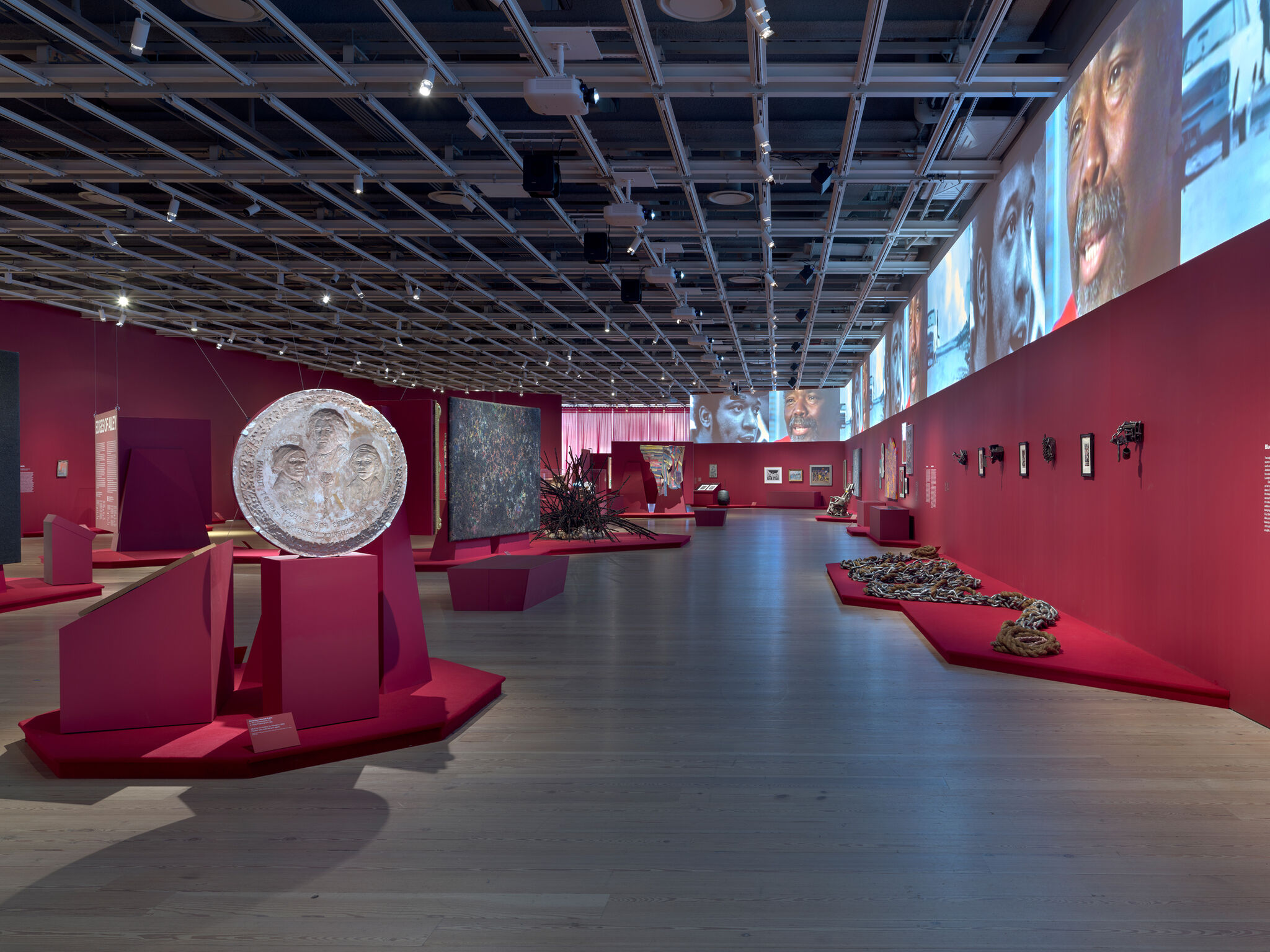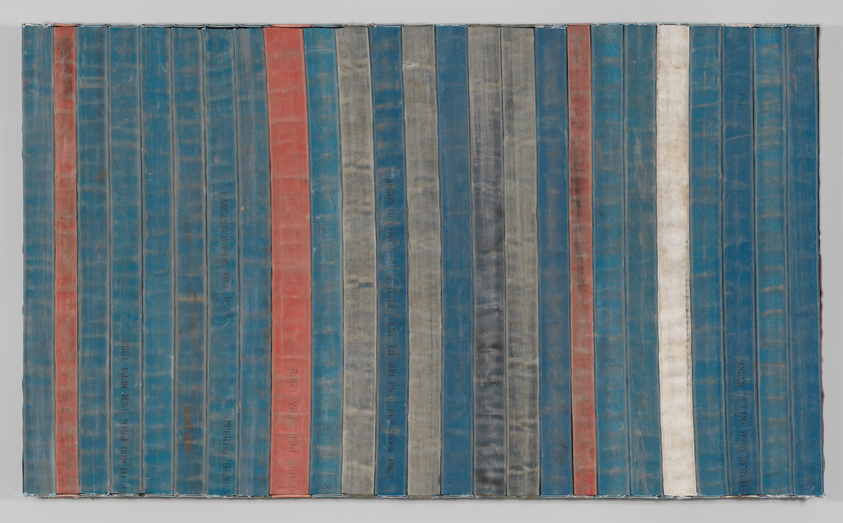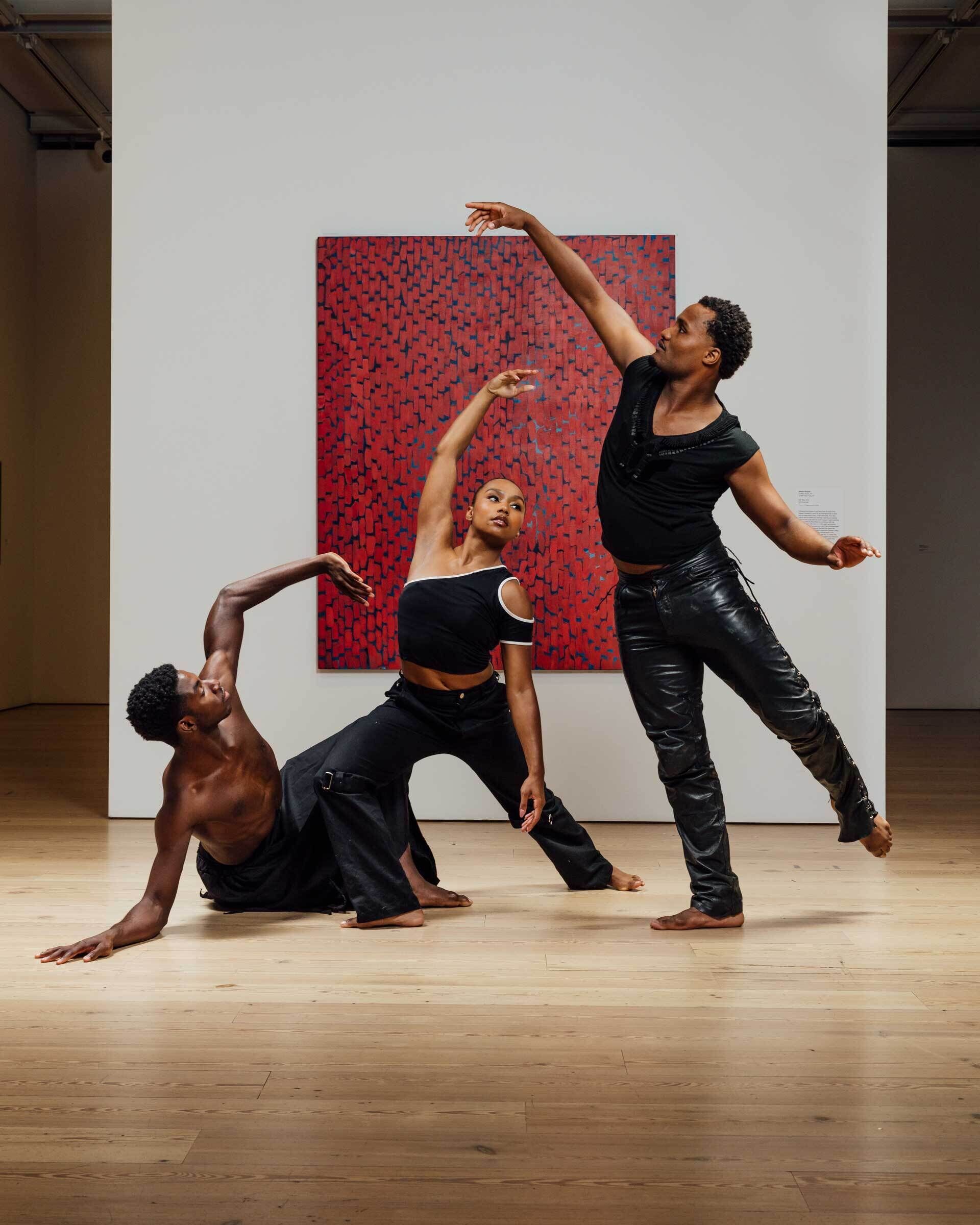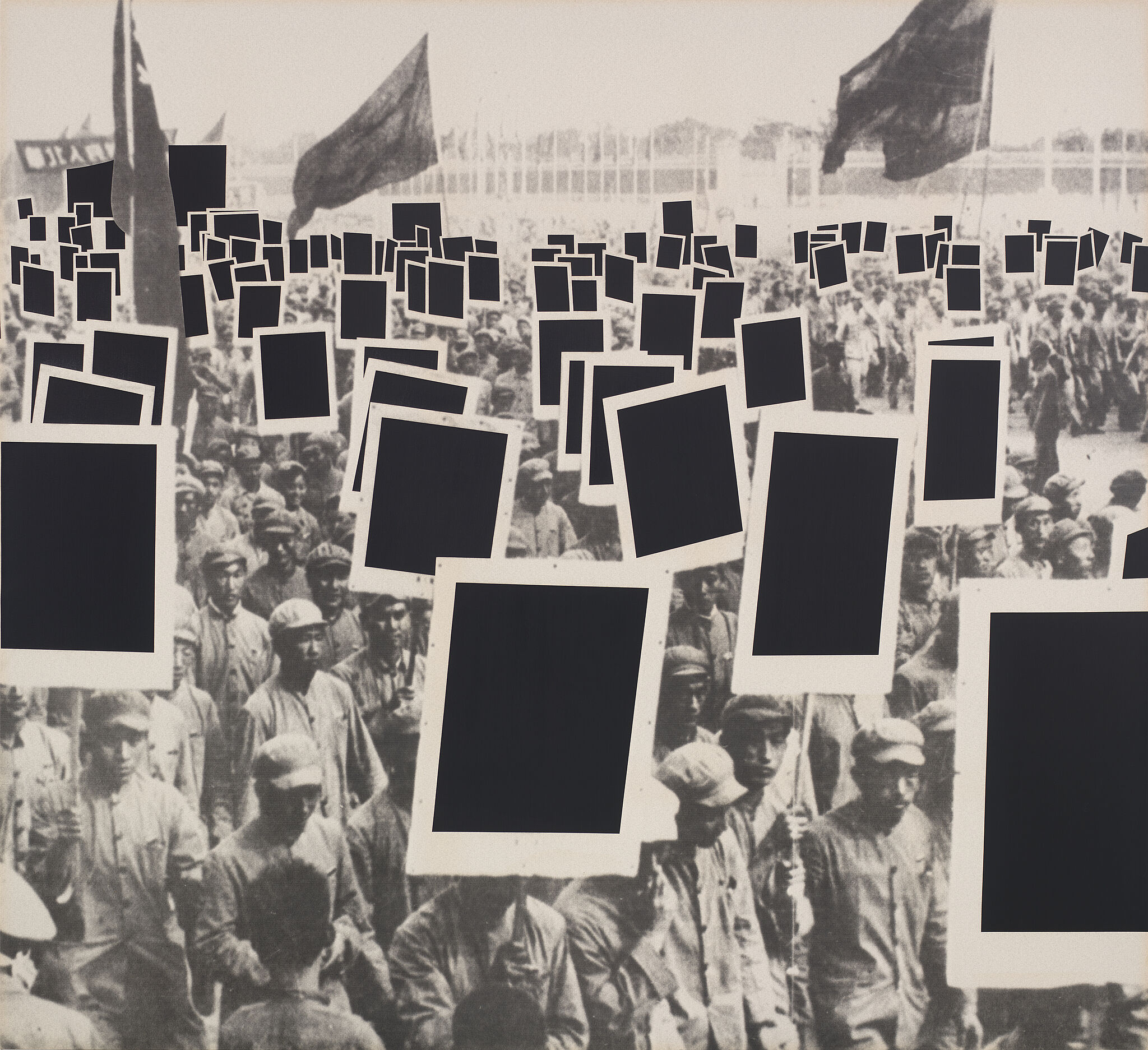Not on view
Date
2012
Classification
Sculpture
Medium
Decommissioned fire hoses and vinyl on plywood
Dimensions
Overall: 66 × 111 1/2 × 3 3/4in. (167.6 × 283.2 × 9.5 cm)
Accession number
2016.262
Credit line
Whitney Museum of American Art, New York; gift of Barbara and Michael Gamson
Rights and reproductions
© artist or artist's estate
Audio
-
0:00
Theaster Gates, Minority Majority, 2002
0:00
Theaster Gates: My name is Theaster Gates. I am an artist working in Chicago.
I remember I had been reading a lot about the Civil Rights Movement, just as a kind of background research for other projects, and around the same time I found out that these discontinued fire hoses were available, and I was really just thinking about the fire hoses not yet as something that was connected to history, but just a raw material that was around, and maybe one day I would imagine using the canvas to make something.
Narrator: Gates is interested in the way materials can embody history, even in an abstract work of art. Here, he uses old fire hoses to reference police violence against peaceful protesters. He called the work Minority Majority.
Theaster Gates: The title for this piece, I feel like I'm always thinking about the changes that are happening culturally, and we're in a moment when the classification of minority status, for black and brown people, is shifting, where black and brown people will become the majority of the American population. And so I wanted to acknowledge that truth so that as we're reflecting on this idea of the flag, or democracy, or Americanness, that there would be these small acknowledgements that this country is becoming more and more diverse, but also different in new ways.
-
0:00
Theaster Gates, Minority Majority, 2002
0:00
Theaster Gates: Me llamo Theaster Gates. Soy artista y trabajo en Chicago.
Recuerdo que había estado leyendo mucho acerca del Movimiento por los derechos civiles en Estados Unidos, como quien busca información contextual para otros proyectos, y más o menos al mismo tiempo descubrí que estas mangueras de bombero que ya no se fabrican estaban disponibles; en ese momento no creía que las mangueras tuvieran ningún tipo de importancia histórica, sino que las veía solo como materia prima a la que yo podía acceder, quizá algún día se me ocurriría usar la lona para hacer algo.
Narrator: A Gates le interesa el modo en el que ciertos materiales son capaces de encarnar la historia, incluso en una obra abstracta. En este caso, Gates utiliza viejas mangueras de bomberos para representar la violencia policíaca contra manifestantes pacíficos. A esta obra le dio el nombre de Mayoría Minoritaria.
Theaster Gates: El título de esta obra, creo que siempre estoy pensando en los cambios culturales, y estamos en un momento en el que la clasificación de grupo minoritario, para los negros y los "marrones", está cambiando mucho, ya que ambos grupos van camino a convertirse en mayoría en Estados Unidos. Y quise reconocer esa verdad, para que al mismo tiempo que reflexionamos sobre la idea de la bandera o sobre la democracia o sobre ser estadounidenses, se den también pequeños reconocimientos de que este país se vuelve cada vez más diverso, y va cambiando de modos inesperados.
Exhibitions
Installation photography
-


Installation view of Edges of Ailey (Whitney Museum of American Art, New York, September 25, 2024-February 9, 2025). From left to right: Purvis Young, Ocean, 1975; Meta Vaux Warrick Fuller, Mold for Crusaders for Freedom, 1962; Sam Gilliam, Untitled (Black), 1978; David Hammons, Untitled, 1992; Al Loving, Untitled, c. 1975; Hale Aspacio Woodruff, By Parties Unknown, 1935, printed 1996; Hale Aspacio Woodruff, Giddap, 1935, printed 1996; Purvis Young, I Love Your America, late 1970s; Martin Puryear, The Rest, 2009-10; Samella Lewis, Migrants, 1968; Purvis Young, Black People Migrating West, late 1970s; William H. Johnson, Moon Over Harlem, 1943-44; Lonnie Holley, Sharing the Struggle, 2018; Theaster Gates, Minority Majority, 2012; Sam Doyle, Frank Capers, 2023; Sam Doyle, LeBe, 1970s; Wadsworth Jarrell, Together We Will Win, 1973; Faith Ringgold, United States of Attica, 1971; Wadsworth Jarrell, Revolutionary (Angela Davis), 1972; James Van Der Zee, Marcus Garvey Rally, 1924; Jeff Donaldson, Soweto/So We Too, 1979; Maren Hassinger, River, 1972/2012; Maren Hassinger, River, 1972/2012; Melvin Edwards, Utonga (Lynch Fragment), 1988; Aaron Douglas, Bravado, 1926; Melvin Edwards, Chitungwiza from the Lynch Fragment series, 1989; Aaron Douglas, Flight, 1926; Melvin Edwards, Katura from the Lynch Fragment series, 1986; Aaron Douglas, Surrender, 1970; Melvin Edwards, Cup of? From the Lynch Fragment series, 1988. Photograph by Ron Amstutz
From the exhibition Edges of Ailey



